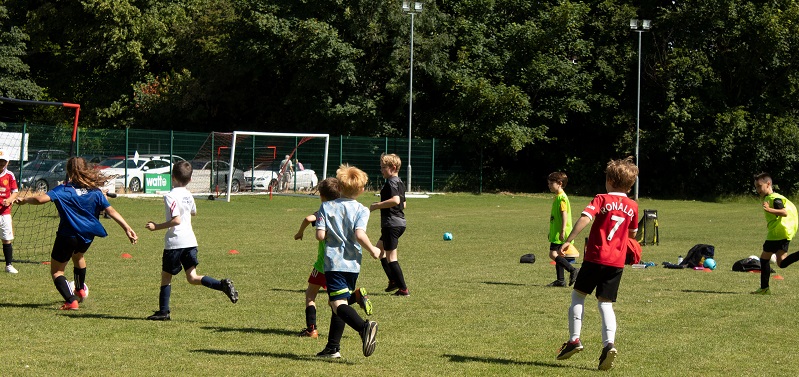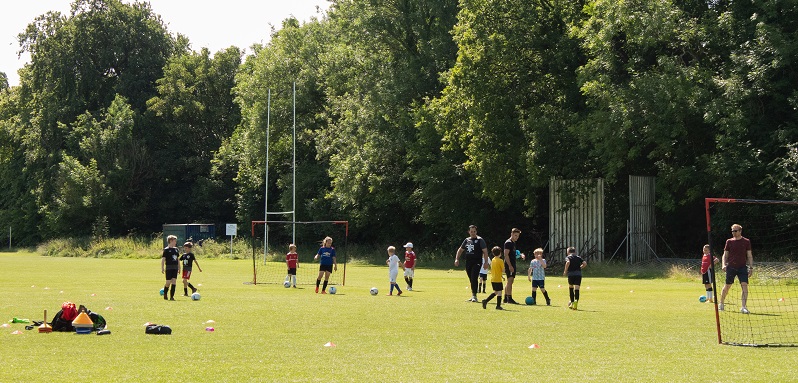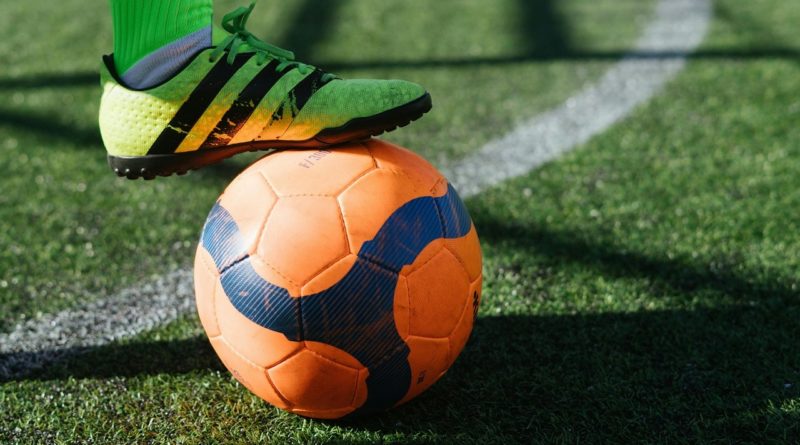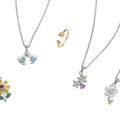Simple Guide to Set Piece Strategies for Budding Young Footballers
Are you raising the next generation of footballing legends (at least in their minds)? Are there photos of Messi and Kane plastered all over the kids’ rooms? Do you have to listen to endless discussions about transfers and tactics – without really understanding what any of it means?
Help is at hand with this handy guide to set pieces, so you can strategise along with the best of them!
When it comes to effective strategies in football, set pieces are just as important as choosing the lineup or perfecting team talk at half-time. Set pieces are an integral part of the game that offers plenty of goal-scoring opportunities for the team. So, get that ball stop netting out and start practising.
Understanding the Basics of Set Pieces
In football, set pieces are opportunities to influence the game’s outcome. They involve predefined strategies executed in restart situations like corners, free kicks, throw-ins, and penalties. These structured moments allow teams to exploit their tactical prowess and individual skills.
 Free kicks and corners can target specific areas or players. Throw-ins are free deliveries into the opposition territory, and penalties are direct shots on goal, often decisive in matches. Effective set-piece strategies create goal-scoring opportunities, making them essential in any team’s tactical arsenal.
Free kicks and corners can target specific areas or players. Throw-ins are free deliveries into the opposition territory, and penalties are direct shots on goal, often decisive in matches. Effective set-piece strategies create goal-scoring opportunities, making them essential in any team’s tactical arsenal.
Why Are Set Pieces Important in Football?
Set pieces in football are significant for multiple reasons. They can be a strategic tool to score goals in a controlled environment, often proving decisive in tightly contested matches. Coaches meticulously plan and rehearse set pieces, exploiting the opposition’s weaknesses and maximising their team’s strengths.
This emphasis stems from the fact that a significant portion of all goals scored in football are from set pieces – corners, free kicks, and penalties. Having a well-drilled set-piece routine provides an edge in the match and can often be the difference between winning and losing.

Key Types of Set Pieces
There are a few key types of set pieces that are important to practise to give players the best possible chance over their opponents. Let’s look at three key types of set pieces and how they can help you gain the upper hand in a match.
Developing Effective Corner Kick Strategies
Corner kicks offer an opportunity to pose a significant threat to the opposition. Effective corner kick strategies hinge on accurate delivery and well-rehearsed routines that can exploit defensive vulnerabilities.
- Near Post Runs: This strategy involves a player making a run towards the near post as the ball is delivered, aiming to flick it on, either towards the goal or into a dangerous area in the box.
- Far Post Delivery: Another strategy targets players positioned at the far post, often used when taller players can out-jump the defence.
- Short Corners: This strategy involves a quick, short pass to a teammate close by, opening up different angles and pulling defenders out of position.
Implementing these strategies into football training involves a mix of spatial awareness, accurate delivery and timing drills.
Mastering Free Kick Techniques
Converting a free kick into a goal requires mastery over a range of techniques, which can be honed with consistent training. Each of free kick techniques can be implemented into football training through a mix of targeted shooting, accurate passing, and tactical drills that simulate match situations. By incorporating these drills into the regular training sessions, teams can effectively utilise their free-kicks to create scoring opportunities and apply pressure on the opposition.
Throw-In Tactics For Keeping Possession
Throw-ins serve as a method to restart play and maintain possession in football. Mastering effective throw-in tactics can lead to significant advantages in maintaining control of the game.

- Long Throw-ins: This tactic involves throwing the ball over long distances, typically towards the penalty area, to create a scenario similar to a corner. The effectiveness of this tactic hinges on the throwing
ability of the player and the aerial strength of the teammates. - Short Throw-ins: Aimed at retaining possession, a short throw-in involves a quick pass to a nearby teammate. The goal is to keep the ball within your team and build the play from there.
- Line Throw-ins: These are aimed at advancing up the field while still maintaining possession. The thrower targets a teammate further down the line who has found a pocket of space.
Incorporating these tactics into your football training will ensure your team maximises every throw-in opportunity, effectively utilising them to maintain or regain possession, build attacking play, or even create goal-scoring opportunities.
Defensive Strategies For Set Pieces
Set pieces aren’t all about the offence. Teams need to be able to defend against the opposing team’s set pieces. This is where defensive strategies for set pieces come into play.
There are a few key aspects to keep in mind when defending against set pieces:
- Communication
- Marking
- Positioning
Once the team masters these basic aspects, they’ll be able to effectively defend against set pieces. Also, the more you know about set-piece techniques, the easier it’ll be to defend against whatever the opposition throws at you.







Pingback: Soccer Training Strategies: Preparing for the Big Game – Soccer Rondo